- Home
- J. -H. Rosny aîné
Three Science Fiction Novellas: From Prehistory to the End of Mankind
Three Science Fiction Novellas: From Prehistory to the End of Mankind Read online
Three Science Fiction Novellas
Three
Science Fiction
Novellas
FROM PREHISTORY TO THE
END OF MANKIND
J.-H. Rosny aîné
Translated and annotated by
Danièle Chatelain and George Slusser
Wesleyan University Press
Middletown CT 06459
www.wesleyan.edu/wespress
© 2012 Danièle Chatelain and George Slusser
All rights reserved
Manufactured in the United States of America
Designed by Katherine B. Kimball
Typeset in Arno Pro by A. W. Bennett, Inc.
Wesleyan University Press is a member of the Green
Press Initiative. The paper used in this book meets
their minimum requirement for recycled paper.
Library of Congress Cataloging-in-Publication Data
Rosny, J.-H., 1856–1940.
[Novellas. English. Selections]
Three science fiction novellas : from prehistory to the end
of mankind / J.-H. Rosny aîné ; translated and annotated by
George Slusser and Danièle Chatelain.
p. cm. — (The Wesleyan early classics of science fiction series)
Includes bibliographical references.
ISBN 978-0-8195-6945-5 (cloth : alk. paper) —
ISBN 978-0-8195-7230-1 (e-book)
1. Rosny, J.-H., 1856–1940—Translations into English. 2. Science fiction,
French—Translations into English. I. Slusser, George Edgar.
II. Chatelain, Danièle. III. Rosny, J.-H., 1856–1940. Xipéhuz.
English. IV. Rosny, J.-H., 1856–1940. Autre monde. English. V. Rosny,
J.-H., 1856–1940. Mort de la terre. English. VI. Title.
PQ2635.056A2 2011 2011
843′.912—dc22 2009047219
5 4 3 2 1
We gratefully acknowledge the assistance of the
French Community of the Belgian Ministry of Culture.
Contents
Translators’ Note
Introduction: Rosny’s Evolutionary Ecology
The Xipéhuz
Another World
The Death of the Earth
Notes
Annotated Bibliography
Translators’ Note
The translators used, for their translation, the text reproduced in J.-H. Rosny aîné: Récits de science-fiction, edited and with a preface by Jean-Baptiste Baronian (Verviers, Belgium: Bibliothèque Marabout), 1975. This omnibus edition is (sadly) the most recent serious publication of Rosny’s SF works by a major publishing house. The title page implies that the editors consulted Robert Borel-Rosny, executor of Rosny’s literary estate.
As a working method, the translators compared the aforementioned texts with those of the first editions of each Rosny work, using the holdings of the J. Lloyd Eaton Collection, University of California, Riverside:
Les Xipéhuz. Paris: A[ndré] Savine, 1888.
Un autre monde. Paris: E. Plon, Nourrit et Cie, 1898.
La Mort de la Terre. Paris: E. Plon, Nourrit et Cie, 1910.
For each novella, the text of the Baronian anthology is essentially the same as the text of these first editions (there are minor typographical differences). Footnotes to the translation are those of Rosny himself or his characters. Superscript numbers in the text refer to notes supplied by the translators, which are located in the Notes section at the back of the book. All references in the text and notes to works of Rosny, Jules Verne, and H. G. Wells are, respectively, to the following editions:
J.-H. Rosny aîné: Récits de science-fiction. Verviers, Belgium: Bibliothèque Marabout, 1975 (French quotations).
Jules Verne. Les Intégrales Jules Verne. Paris: Hachette Grands Oeuvres, 1976–81.
H. G. Wells. 28 Science Fiction Stories. New York: Dover, 1952.
H. G. Wells. The Time Machine. Edited by Harry Geduld. Bloomington: Indiana University Press, 1987.
Introduction
Rosny’s Evolutionary Ecology
Science fiction has a problem of paternity. French critics routinely refer to Jules Verne as “le père de la science-fiction.” Ads for the recent Penguin Classics edition of H. G. Wells proudly trumpet their author as “the father of science fiction.” We speak here for another party in this custody battle: the Belgian writer J.-H. Rosny aîné. We would, however, change the designation somewhat: Rosny is the father of hard science fiction. If we ask, with Mark Rose, “in what sense is science fiction about science,” the proponents of hard SF answer: it is all about science.1 Physicist-writer Robert L. Forward goes further. He claims that in order for a narrative to be science fiction, science must write the fiction. Forward means this literally: “I just write a scientific paper about some strange place—and by the time I have the science correct—the science has written the fiction.”2 For Forward, conventional fiction bends the laws of nature to its wishes and desires, whereas science fiction cannot. This in itself is a purist’s dream of SF. In light of it, however, our contention is that Rosny, not Verne nor Wells, was the first writer to allow science to write his narratives in the neutral, ahumanistic manner Forward proclaims.
The implications of our claim are great, and some questions are in order. First, what exactly is Rosny’s scientific vision, and how does it differ from that of Verne and Wells? We define Rosny’s unique perspective as one of “evolutionary ecology,” and it sets him apart from both writers. Rosny’s scientific education took place in England at the time of the Darwinian controversy, and led him away from the Comtean positivism that dominated Verne’s vision and the francophone world. For unlike Comte’s laws of phenomena, evolutionary theory emphasizes causality, and takes into account space-time transformation as nonteleological process. Likewise, although Rosny shares evolutionary theory with Wells, the rigors of his pluralist sense of the evolutionary process take him far beyond Wells’s humanocentric focus and toward a scientific view of humankind’s relation to its environment that we would today call “ecological” in the broad sense.
Second, how does Rosny, in comparison with Verne and Wells, develop his pluralist vision of evolution in fictional form? Rosny’s pluralism, as it opens out toward the relativistic sciences of the twentieth century, sees evolution in terms of an ecosystem, the complex and neutral interaction of independent biotic and abiotic factors in a particular location, that of Earth itself. In fictional works that span evolutionary time from human prehistory to the passage of all carbon-based life forms to new sentient life, Rosny strives to remove humankind and human reason, except as localized phenomena, from the center of the evolutionary process. Unlike Verne and Wells, he aspires in his fiction to the most rigorous neutrality and scientific objectivity, and thus is the first writer to set a gold standard for the future hard SF extrapolations of Forward and others.
Rosny strives as hard as any writer can who uses words and addresses a human audience to decenter humankind, to make it part of a larger system of life in evolution. The third question, then, is how and in what ways does the science actually write the fiction in Rosny’s work? Forward’s program might appear to be inimical to fiction in general, which is traditionally centered on the activity of human beings, and the mind-matter duality that generally defines such activity. Rosny’s scientific vision, however, allows him not only to inscribe a fictional arc from prehistory to the end of humankind’s world, but to look beyond this trajectory, in the final pages of La Mort de la Terre, to the possibility of a t
ranshuman experience. Here humanity, seen as the apogee of carbon-based life passes some aspect of its biological and perhaps cultural heritage to another life form, and thus continues to evolve beyond its extinction as carbon entity. Thus in the final section of this introduction we will compare Rosny’s fictional treatment of his Last Man with the Last Men of the more recent hard SF writers Arthur C. Clarke and Gregory Benford.
The comparison reveals a significant difference. For while these recent hard SF writers seem to retreat from the transhuman moment, Rosny pushes transhumanity to the limit of scientific possibility. With perhaps the exception of Olaf Stapledon, there exists to date no more objective, ecologically sound treatment than Rosny’s of the passage from humans to new possible forms of life. Despite sympathies for humanity, Rosny realizes that we will someday have to “let go,” that the key element in the ecological balance is not humankind but life in whatever form it may take. In light of Rosny, transhumanity becomes the defining problem for hard SF.
Rosny’s English Education
Among French-language writers of his time, Rosny’s cultural and linguistic situation was unique. He was born Joseph Henri Honoré Boëx, on February 17, 1856, in Brussels. His formal education was cut short by the death of his father and ensuing financial difficulties. Forced to leave school, he learned to be a telegrapher. To find work, he went to London, where he remained for eleven years (1873–1884), working as a night operator for the British Post Office. This English period appears to have been crucial for his intellectual development. A voracious autodidact, Rosny learned English and apparently spent his days in the British Museum, reading widely in world literature. At the same time, he developed a strong interest in science. Controversy was raging over Darwinian evolution, and judging from evidence in works Rosny conceived (and perhaps wrote) during this time, he followed these arguments closely. He could have attended Huxley’s lectures at Imperial College.
Too little is known about these formative years in England. One ambitious biography of Rosny exists in English, Amy Louise Downey’s dissertation “The Life and Works of J.-H. Rosny aîné, 1856–1940.”3 For information on this English period, Downey claims to rely on documents and letters in possession of the Borel family, that of Rosny’s second wife. According to Downey, Rosny published several stories, in English, in London magazines. She sees Rosny moving in intellectual circles, and even posits an encounter with Wells. The latter is unlikely; Wells, born in 1866, was barely eighteen when Rosny left England in 1884. There are, nonetheless, documented facts. While in London, Rosny married and had a family with a young English woman of the poor working class. He most certainly conceived and wrote his first novel, Nell Horn (published in French in 1887), while in England. It is a naturalist novel that details life in the London slums the impoverished Rosny knew firsthand. It is also clear that he drew inspiration from English evolutionary debates for his other 1887 novel, Les Xipéhuz. Indeed, no analogues to the prehistoric extrapolation of this novel exist in the francophone world. Prehistoric speculations, in the wake of Lyell and Darwin, appear to be a British preoccupation, and famous examples exist from Wells to Brian Aldiss’s Cryptozoic! (1970). Darwinian thought informs Rosny’s seminal work at the deepest level. Not only does it offer a viable evolutionary model, but there is no hand of God guiding human destiny. If Les Xipéhuz displays the triumph of human reason, this triumph is neither preordained nor permanent. If not for contingencies of environment and heredity, the nonhuman life form could prove the fittest.
We have more documented facts about Rosny’s subsequent life. He moved with his family to Paris in 1884. The publication of Nell Horn and of Les Xipéhuz, in 1887, launched him on a successful literary career along parallel tracks, as a naturalist novelist and a writer of speculative fiction. Young Rosny moved in literary circles of the belle époque, becoming acquainted with the leading artists and intellectuals of the time, from Anatole France to Émile Zola and Alphonse Daudet. The naturalism of Nell Horn impressed the high priest of this form, Edmond de Goncourt. Rosny was named in Goncourt’s will, and later became president of the Académie Goncourt. At the same time Rosny’s scientific fiction made him widely known and respected among scientists. It is clear from his popularizing treatises, such as Les sciences et le pluralisme (1922), that he kept abreast of scientific advances. A 1936 entry in Portraits et souvenirs, the memoirs of the Nobel Prize–winning physicist Jean Perrin, is testimony to the fact that he was respected by the most advanced members of the French scientific community: Perrin cites Rosny’s vast knowledge of all the sciences, commenting that “son travail sur le pluralisme abonde en aperçus originaux sur la physique” (his work on pluralism abounds in original ideas on physics).4 Downey claims Rosny knew the Curies and Einstein personally, and was conversant with the theories of Freud—all possible but undocumented.
Rosny continued to write both naturalist fiction and SF throughout his long life. He died in 1940, on the eve of Germany’s entry into Paris. It is ironic that, for a writer whose work is so marked by English Darwinism, his fiction has been so little translated into English. Except for one mass-market paperback—a semitranslation-rewrite by Philip José Farmer for DAW Books of Rosny’s1922 novel L’étonnant voyage d’Hareton Ironcastle—and a Hollywood film vaguely based on his 1911 novel La Guerre du feu (The War for Fire), mistranslated as The Quest for Fire, Rosny’s work remains unknown in the Anglo-American sphere.5 Rosny’s English years are possibly more crucial to understanding his work than his many years as a celebrity on the Parisian literary and cultural scene. For it was in England that this Belgian writer was exposed to a very different scientific tradition, and a vision of evolution that remained, even at the time of the novellas in this volume, highly controversial in francophone circles. Critics, for example, have often been content to contrast Wells and Rosny with reference to their sense of how evolution operates: Wells is seen as the Darwinian, Rosny as being closer to Lamarckian ideas.6 This division follows a comfortable cultural divide. But Rosny’s years in Wells’s England are mirrored in the evolutionary vision of Rosny’s works, which is uniquely ecological and clearly derived from Darwinian principles.
The usual comparison of Darwin and Lamarck is at the level of Lamarck’s idea of “soft inheritance”—the inheritability of traits acquired in one lifetime transferred to the next generation. The comparison, however, is moot, for neither Lamarck nor Darwin offers an adequate mechanism for describing the development of species at this level. That was to be the work of Mendel and modern genetics.7 Lamarck’s sense of evolution, however, is much broader than soft inheritance. Evolution, for Lamarck, comprises two central mechanisms: what he calls “le pouvoir de la vie” (the power of life), and “l’influence des circonstances” (the influence of circumstances). The latter involves Lamarck’s theory of use and disuse, whereby species develop specialized organs according to the needs of specific environments. This could apply to Rosny’s Targ and the Last Men in La Mort de la Terre, whose huge chests have developed because of lack of oxygen in the air on a nearly waterless planet. The former idea of the power of life, however, does not fit Rosny. Lamarck sees the development of life as an ever-complexifying process. This would mean that the ferromagnetics in La Mort de la Terre represent a “higher” species, when in fact they are better described as at the beginning of their era of evolutionary development. Nor is it evident that the humans who defeat the Xipéhuz in Les Xipéhuz are a higher or more complex form of life. If Rosny may seem to promise a Lamarckian development here, from the beginning he throws his reader a Darwinian curve ball. The process Rosny details, as we pass from Les Xipéhuz through La Mort de la Terre, is a clear product of natural selection. Rosny gives us the birth and death of all carbon species—including humanity itself—as part of a process without pre-established design, the result of ever-changing relationships between life forms and their physical environment. The stuff of Rosny’s novels is the struggle for survival, precisely as Darwin describes it: “As many more
individuals of each species are born than can possibly survive; and as, consequently, there is a frequently recurring struggle for existence, it follows that any being, if it vary however slightly in any manner profitable to itself, under the complex and sometimes varying conditions of life, will have a better chance of surviving, and thus be naturally selected.”8 Both Lamarck and Darwin may revere a life force; but Rosny follows Darwin in his sense of a single source of life, branching out in endless diversity of forms, all of them “beautiful and wonderful” in their own right, be they the nonhuman Xipéhuz, human beings, or the ferromagnetics that replace humanity.
Rosny, we will argue, is not only a steadfastly Darwinist writer but one who developed a supremely modern ecological view of evolution from his Darwinian education. As a Darwinian, he remained, and in a sense remains to critics today in positivist and Cartesian France, a stranger in his own land. He also remained—oddly, for a writer whose work covered the first half of the twentieth century—a stranger to relativity and quantum theory, theories of which he was aware, as we see from his nonfictional treatises. It was evolutionary theory that held lifelong sway over Rosny’s scientific vision.
Rosny and Verne
At first glance, Verne and Rosny appear to be separated by a generational chasm. Rosny’s earliest scientific novels—from Les Xipéhuz to La Mort de la Terre—barely overlap Verne’s final period, which extends approximately from Robur le conquérant (1886) to the posthumous publication of Le Secret de Wilhelm Storitz in 1910. Conventional wisdom would see Rosny’s essentially evolutionary view of science as different from Verne’s abiding positivism. If English science flirted with Auguste Comte and his positivist method, John Stuart Mill rejected that method in 1865 as unscientific because it refuses to consider causality. Comte has little place in the British tradition of empirical science that Rosny encountered in the form of evolutionism. Nonetheless, Verne’s scientist-protagonists seem consistently to operate as representatives of that Age of Science Comte saw as the apex of human achievement. They map, classify, generate taxonomic hierarchies. Working in what appears to be a fixed, spatialized system of human knowledge, they legislate order from the position of authority their logically perfected science confers on them. Nature is an intricate grid to be mapped, not a system in transformation. Seen as such, Verne’s science bears little resemblance to Rosny’s evolutionism, whose method is experimental in the modern sense.

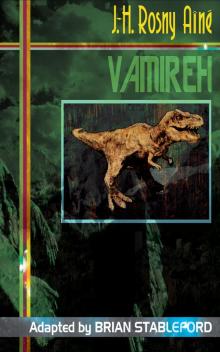 Vamireh
Vamireh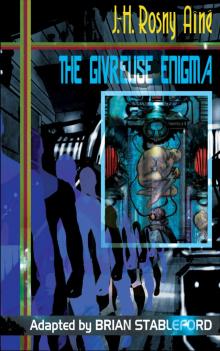 The Givreuse Enigma
The Givreuse Enigma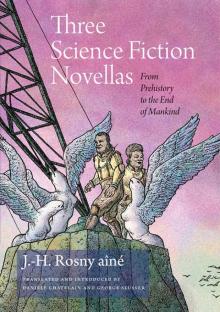 Three Science Fiction Novellas: From Prehistory to the End of Mankind
Three Science Fiction Novellas: From Prehistory to the End of Mankind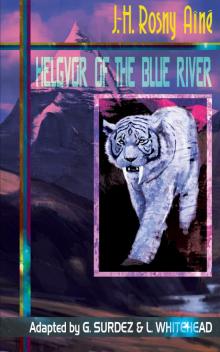 Helgvor of the Blue River
Helgvor of the Blue River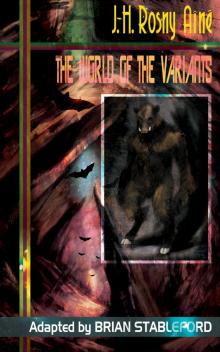 The World of the Variants
The World of the Variants Pan's Flute
Pan's Flute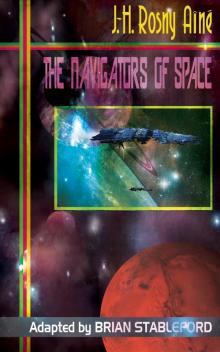 The Navigators of Space
The Navigators of Space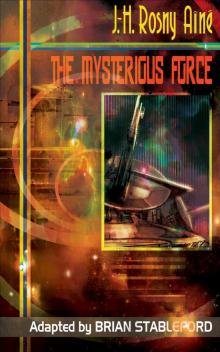 The Mysterious Force
The Mysterious Force